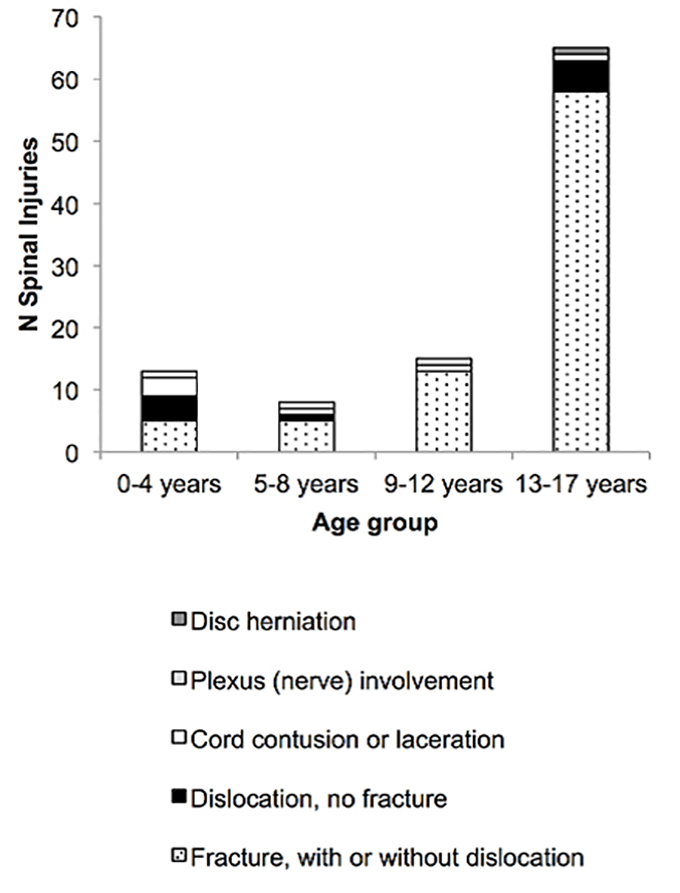Principal Investigator: Mark R. Zonfrillo, MD, MSCE, Children’s Hospital of Philadelphia
Below is an executive summary of this line of research. Please note that each summary describes results and interpretation that may not be final. Final interpretation of results will be in the peer-reviewed literature.
Motor vehicle crashes (MVCs) are the most common mechanism of spinal injury in children, and spinal cord injuries result in the most residual physical disability in children. This study aimed to expand upon knowledge of the patterns of injuries and their associated causation scenarios for restrained child occupants in MVCs to gain insight into how loads of the crash and restraint system are transferred to the spinal column.
A case series of crash investigations were identified from the Crash Injury Research and Engineering Network (CIREN) database, operated by the National Highway Traffic Safety Administration (NHTSA). CIREN obtains detailed crash investigation data from crashes involving a sample of patients admitted to a network of level-one trauma centers in the U.S. Cases included child occupants under 18 years old with at least one AIS 2+ spinal injury from vehicles model year 1990 and newer. Only patients properly restrained in a harness child restraint system, belt-positioning booster seat, or lap and shoulder belt were included. Rollover crashes were excluded, as were occupants with pre-existing co-morbidities contributing to spinal injury or with limited injury information.
A multi-disciplinary Case Review Team studied 42 cases meeting the inclusion criteria to determine injury causation scenarios. The case review process included review of crash conditions, restraint and occupant characteristics, occupant injuries, and occupant contact points within the vehicle. Data summaries included estimates of the vehicle dynamics and occupant kinematics during the crash, and detailed descriptions of the injuries by body region, type of injury, and severity.
The cases included 97 distinct AIS 2+ spinal injuries, with fracture as the most common injury type (80 percent). Spinal injuries predominantly occurred in high-speed frontal crashes of passenger cars with front-row teenage occupants who sustained non-fatal vertebral fractures from flexion over the belt or harness or direct contact from the vehicle interior. The majority of the crashes (62 percent) were frontal and at a relatively high speed, with an average delta V (the instantaneous change in velocity, an accepted measure of crash severity) of 51 km/h.
The results of this study align with prior work showing that occupants who are restrained and in non-rollover crashes with spinal trauma sustain mostly vertebral fractures and relatively few cord injuries. Although these fractures are less disabling than cord injuries, they still result in hospitalization and measurable morbidity. Because these crashes were predominantly high-speed and involved teenage occupants, there are important implications for prevention strategies and countermeasures. Future work should focus on additional means to further mitigate MVC-related spinal trauma in children while continuing to limit head excursion and resultant injuries.
Project Team Members
Kristy Arbogast, PhD, Children’s Hospital of Philadelphia; Caitlin Locey, BS, Children’s Hospital of Philadelphia
Students
Steven R. Scarfone, The University of Pennsylvania; Alexandra Conway, Brown University
IAB Mentors
Uwe Meissner, Technical Advisor; John Combest, Nissan Technical Center North America Inc.; Christina Mullen, State Farm Mutual Automobile Insurance Company; Richard Bandstra, Volkswagen Group of America; Schuyler St. Lawrence, Toyota Motor North America Inc.

